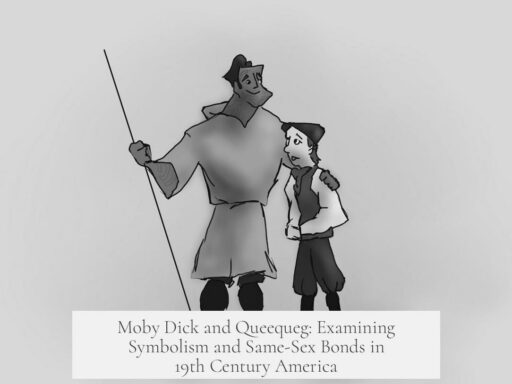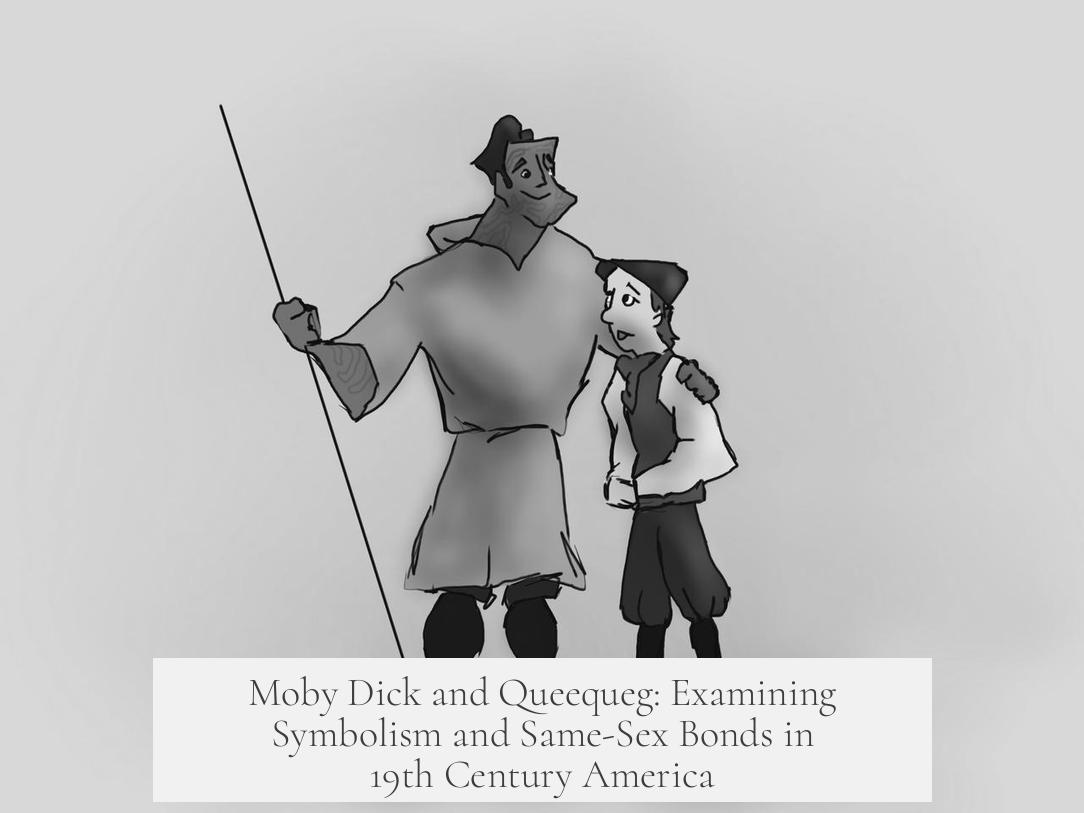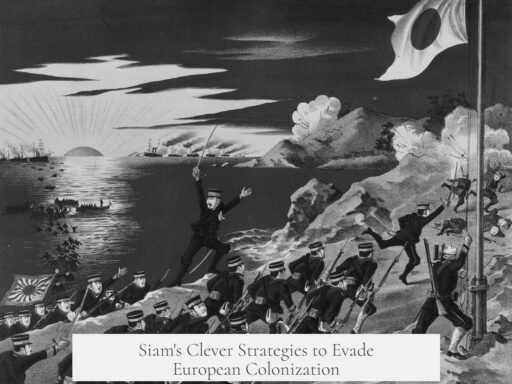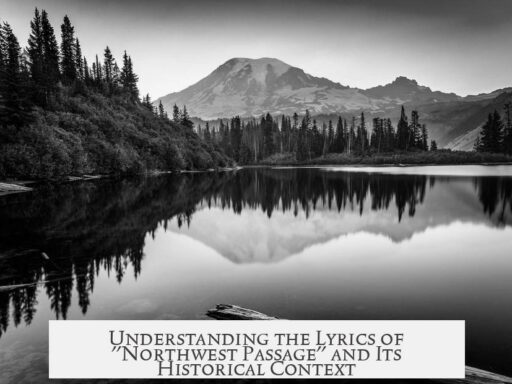Moby Dick’s portrayal of Ishmael and Queequeg’s relationship uses deep symbolic and cultural references that underscore complex meanings about race, companionship, and possibly homosexuality in 19th century USA society. Their friendship draws on Polynesian customs, literary history, and interracial dynamics that challenged the period’s social norms while avoiding explicit recognition of homosexual themes.
Herman Melville bases Ishmael and Queequeg’s bond on the Polynesian tradition of tayos, which refers to extravagant friendships often formed instantly between strangers. In Omoo, Melville describes alliances far exceeding the loyalty seen in classical tales like Damon and Pythias. Melville’s own South Pacific travels informed this depiction, providing authentic insight into such cross-cultural friendships.
Literary inspirations further enrich this relationship’s texture. Melville drew on sailor camaraderie evident in works like his own Typee and Redburn, as well as references to “Fidus Achates” friendships (“league of offense and defense”) from his novel Mardi. American Indian practices of sacred brotherhood, as recounted by Richard Henry Dana, Jr. in Two Years Before the Mast and George H. Colton in Tecumseh, also influenced Melville. These examples reveal historical alliances where men pledged mutual sacrifice and support under sacred vows, transcending simple friendship.
Melville’s depiction of Ishmael and Queequeg symbolizes more than personal friendship. It represents “the magnetic chain of humanity” extending across races. The interracial bond between the white Ishmael and the Polynesian Queequeg challenges prevailing racial prejudices and gestures toward an ideal of universal brotherhood as described by Nathaniel Hawthorne.
However, public perception in Melville’s time was constrained by strong taboos on race and sexuality. Literary critic Harold Bloom notes how readers likely avoided interpreting the relationship’s strong matrimonial imagery as homosexual. The idea of a close interracial “marriage” was already controversial, and any homosexual subtext was too unspeakable to acknowledge openly.
Melville carefully couches the relationship as a profound male comradeship, one that can be presented within socially acceptable boundaries of race relations rather than sexuality. This allowed him to explore themes of interracial love and equality without provoking outright scandal. The narrative layers matrimonial symbolism upon their friendship, calling attention to the intensity and permanence of their bond while maintaining plausible deniability regarding sexual implications.
| Imagery/Description | Significance |
|---|---|
| Ishmael and Queequeg sharing a conjugal bed | Symbolizes a marriage-like union that crosses racial lines |
| Queequeg holds Ishmael in a “bridegroom clasp” | Reveals exclusivity and deep devotion akin to wedlock |
| Queequeg pronounces himself “married” to Ishmael | Affirms a formalized, culturally framed bond of commitment |
| The “hatchet-faced baby” (Queequeg’s tomahawk-calumet) | Represents the fruit or token of their union |
| Their “hearts’ honeymoon” and likening to “old couples” | Evokes intimacy and enduring affection beyond mere friendship |
This layered symbolism serves multiple purposes. It challenges racial divisions by elevating Queequeg and Ishmael’s bond to the status of marriage. It simultaneously skirts direct acknowledgment of homoerotic desire by framing the relationship through cultural rituals and male camaraderie. Readers in the 19th century might have recognized the interracial friendship; the intense emotional and physical closeness could be explained away as a platonic alliance common among sailors and explorers.
In conclusion, Moby Dick uses Ishmael and Queequeg’s friendship as a powerful literary device to question social boundaries in 19th century America. Their relationship embodies Polynesian and indigenous customs of brotherhood and alliance. It symbolizes interracial equality and universal humanity. The use of matrimonial imagery hints at deeper emotional and possibly sexual bonds, but Melville’s careful framing avoids provoking taboo discussions on homosexuality in his largely conservative audience.
- Ishmael and Queequeg’s friendship is modeled on Polynesian tayos and historic cross-cultural alliances.
- Melville draws on literary and indigenous traditions to portray profound male bonds resembling marriage.
- The relationship symbolizes interracial unity and challenges prevailing racial prejudices.
- Contemporary readers likely interpreted the bond as intense comradeship, not homosexual, due to taboos.
- Matrimonial imagery in the novel serves as coded language suggesting deep emotional ties without explicit sexual connotations.
Moby Dick, Queequeg, and Homosexuality in 19th Century USA: A Deep Dive into Melville’s Subtle Bonds
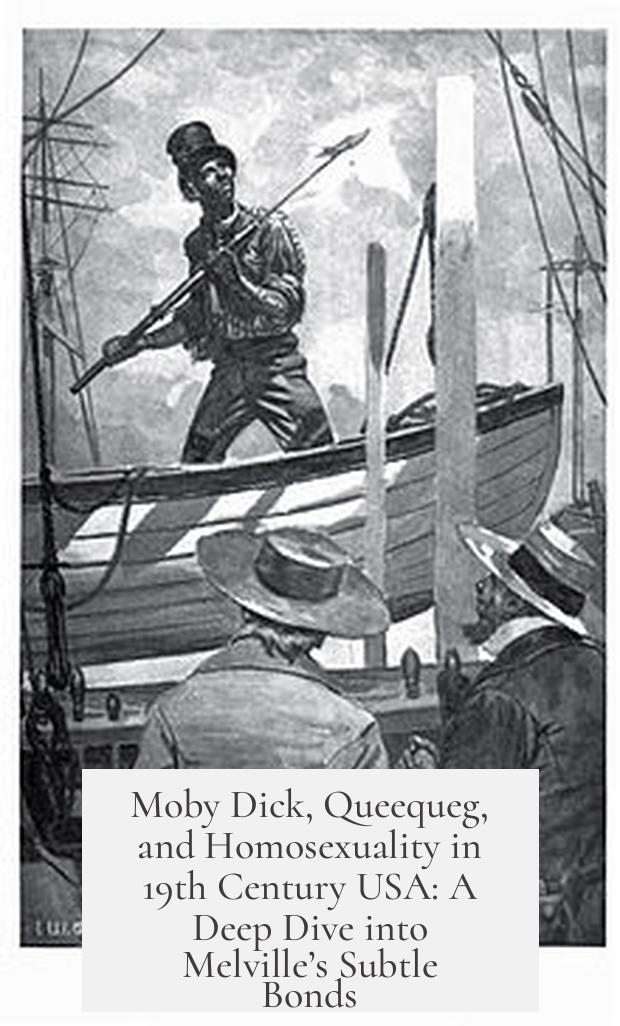
What exactly does the relationship between Ishmael and Queequeg in Moby Dick reveal about homosocial and potentially homosexual aspects in 19th-century America?
Simply put, Ishmael and Queequeg’s friendship is a powerful representation of an interracial, intimate bond, shrouded in the cultural norms and taboos of their time. Melville’s depiction blends Polynesian customs, literary traditions, and coded matrimonial imagery to push boundaries while avoiding direct confrontation with contemporary social restrictions. This friendship mirrors a delicate dance between racial equality, brotherhood, and a covert nod to same-sex affection in a period that was far from open to such ideas.
From Polynesian ‘Tayos’ to Melville’s Mariners
First, let’s talk about the Polynesian custom of tayos. What is it, and why does it matter? It refers to extraordinary friendships marked by mutual devotion—sometimes lifelong—often between men. Melville picked up on this during his travels around the South Pacific, and it clearly influenced his portrayal of Ishmael and Queequeg. These “extravagant friendships” go beyond simple camaraderie and reflect a bond so strong it could rival the famous tales of Damon and Pythias.
Melville didn’t just pull this out of thin air. His personal experiences, alongside stories from other sailors, explorers, and writers, helped craft this dynamic. For instance, Richard Henry Dana, Jr., in Two Years Before the Mast, shared his friendship with the Sandwich Islander Hope, who considered him an aikane—a friend with a contract of fierce loyalty, offensive and defensive. This native institution of friendship sealed with sacrifices was common in the era’s sailor culture.
Melville’s literary inspirations stretch even further back. Ancient accounts, such as those involving Greek youths Anastasius and Anagnosti binding themselves by sacred vows, or the American Indian customs of adopting “bosom friends,” all come into the mix. These examples offer proof that Melville was embedding a deep, symbolic layer into his characters’ bond, signaling more than an ordinary friendship.
The Symbolism of Ishmael and Queequeg’s Relationship
At the heart of this bond lies symbolism. Ishmael becomes Queequeg’s bosom friend, in the same “alliance offensive and defensive” way Dana was to Hope. Their racially mixed friendship represents an idealized vision of “universal extension” of human connection, as Nathaniel Hawthorne described it—the magnetic chain of humanity stretching beyond race and background.
But here’s a twist: Melville fashions this interracial friendship as something approaching a legal, loving marriage. The key word here is disguise. By cloaking this connection as male comradeship, Melville sidesteps the sexual taboos of his audience while still exploring themes of deep love and union.
The Matrimonial Imagery That Raises Eyebrows
The descriptions in Moby Dick brim with matrimonial undertones. Consider this: Ishmael and Queequeg share a bed—a landlord’s conjugal bed, no less. Queequeg holds Ishmael in a “bridegroom clasp,” and this union produces an emblematic “hatchet-faced baby,” the tomahawk-calumet. Queequeg explicitly states he is “married” to Ishmael by his country’s standards. The two lie together as “some old couples” in a kind of “hearts’ honeymoon.”
This imagery pushes readers to ask: Was Melville hinting at homosexuality? Contemporary readers—and many literary critics—pick up on these signals. The relationship’s intensity and language mimic marriage, both symbolically and emotionally. Yet, Harold Bloom rightly points out the 19th-century audience would focus more on the taboo of interracial “marriage” than on any possible homosexual suggestion. The insistent matrimonial language elevates racial boundaries to a legal and affectionate equal footing, daring the public to confront racial prejudice first.
Why Was This Coded Under Friendship? Context Matters
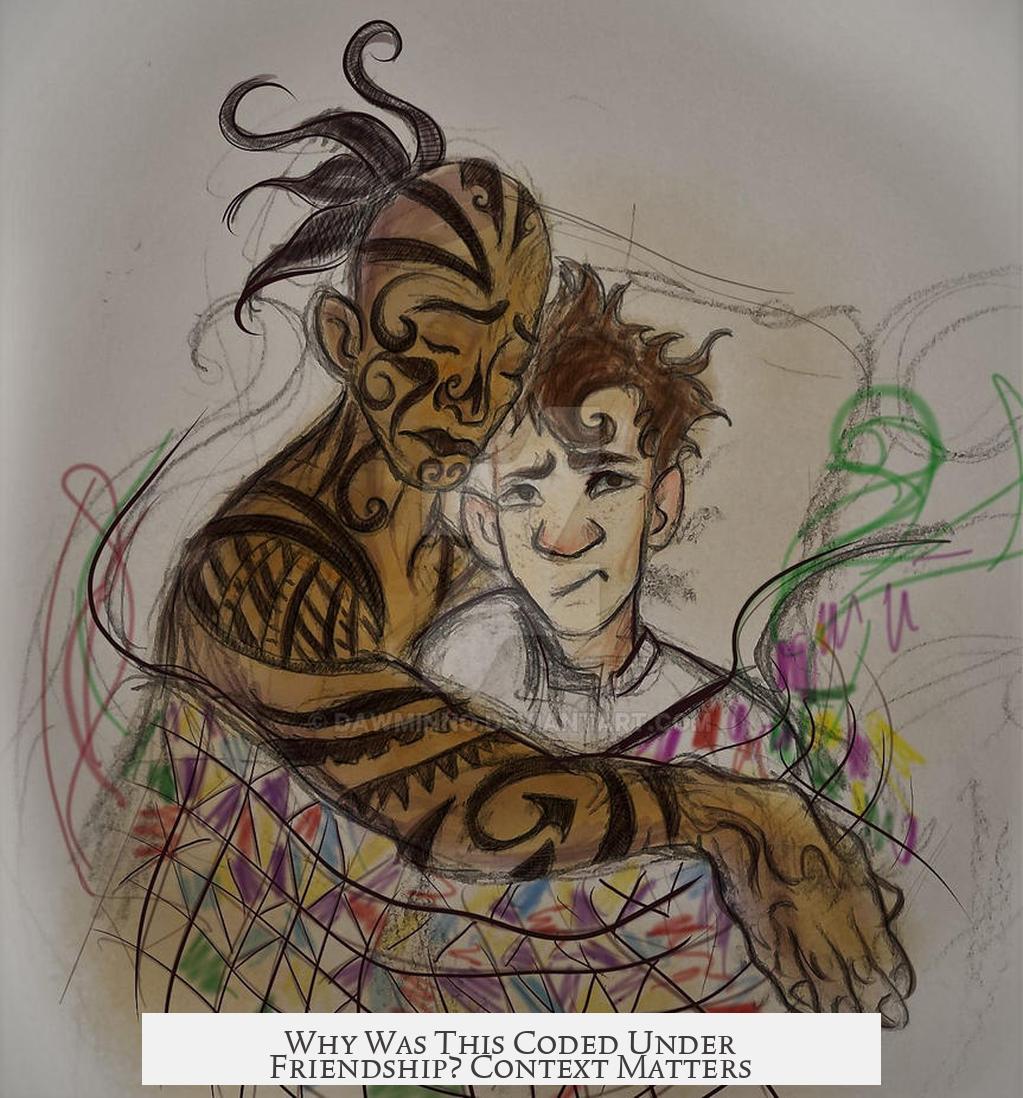
In 19th-century America, public ideas about sexuality were restrictive. Homosexuality was largely unspeakable or criminalized. Melville cleverly uses friendship and cultural rituals to bypass this. The bond is displayed with intense intimacy but presented as brotherhood or alliance.
This concealment allowed Melville to explore themes of interracial equality and deep emotional bonds without alienating his audience. It also shows the *complexity* of male friendships at sea, a space where men of different races and backgrounds formed potent, sometimes lifelong ties. These relationships could harbor emotional, even romantic, depths that conventional society refused to recognize or discuss openly.
What Can Modern Readers Take Away from this?
Understanding Ishmael and Queequeg’s friendship as a coded, layered bond transforms how we approach Moby Dick. It teaches us about:
- The fluidity of intimate male relationships, especially within marginalized spaces like ships.
- The power of cultural exchanges, seen in Polynesian tayos influencing American sea culture.
- The challenge of racial and sexual taboos in literature and society, then and now.
Moreover, Melville’s narrative invites us to question what friendship can mean. How do societal rules shape our understanding of love, loyalty, and family? Is it possible that male friendship in his era and beyond sometimes served as a discreet shelter for affection that went deeper than society permitted?
Final Thoughts: More Than Just a Whale Tale
If you think Moby Dick is just a sea adventure about a white whale, think again. Beneath that vast ocean of whaling exploits lies a nuanced story about race, gender, and the shadows of forbidden love. Ishmael and Queequeg’s relationship is a unique artifact—a testament to the resilience of human connection transcending boundaries.
The swirling depths of Melville’s text hold mirrors up to 19th-century society’s struggles with race and sexuality. He crafts a friendship that might have made his contemporaries squirm, but that’s why it endures. It’s a story of courage and love that sails boldly where many dared not voyage.
So next time you glance at the Pequod, remember: it’s not just a ship chasing a white whale but a vessel floating between cultural tides and hidden desires.
What inspired Ishmael and Queequeg’s deep friendship in Moby Dick?
Melville drew on Polynesian customs of tayos, which were bonds of friendship forged quickly but deeply. His own South Pacific experiences and various literary examples of close male friendships also influenced the portrayal of Ishmael and Queequeg.
How does the book depict Ishmael and Queequeg’s relationship in terms of race and intimacy?
Their bond is shown as a kind of interracial marriage. Melville used matrimonial language and imagery to portray a profound alliance, elevating their friendship to the level of equal union in a racially taboo context of the 19th century.
Was the relationship between Ishmael and Queequeg seen as homosexual by 19th-century readers?
Public perception avoided interpreting it as homosexual. Literary critic Harold Bloom notes that contemporary readers recognized the interracial aspect but denied any sexual implications, as the society then found such interpretations taboo.
What role does matrimonial imagery play in Ishmael and Queequeg’s friendship?
Their friendship is described using marriage language—bedfellow, bridegroom clasp, honeymoon. These images highlight emotional closeness and loyalty, masking deeper meanings that blend race, companionship, and possible homoerotic undertones.
How does Ishmael and Queequeg’s bond symbolize broader human connection?
Their interracial friendship symbolizes a universal human chain. It echoes ideals of brotherhood and mutual defense, crossing cultural and racial lines to suggest a magnetic bond of humanity beyond prejudice.
